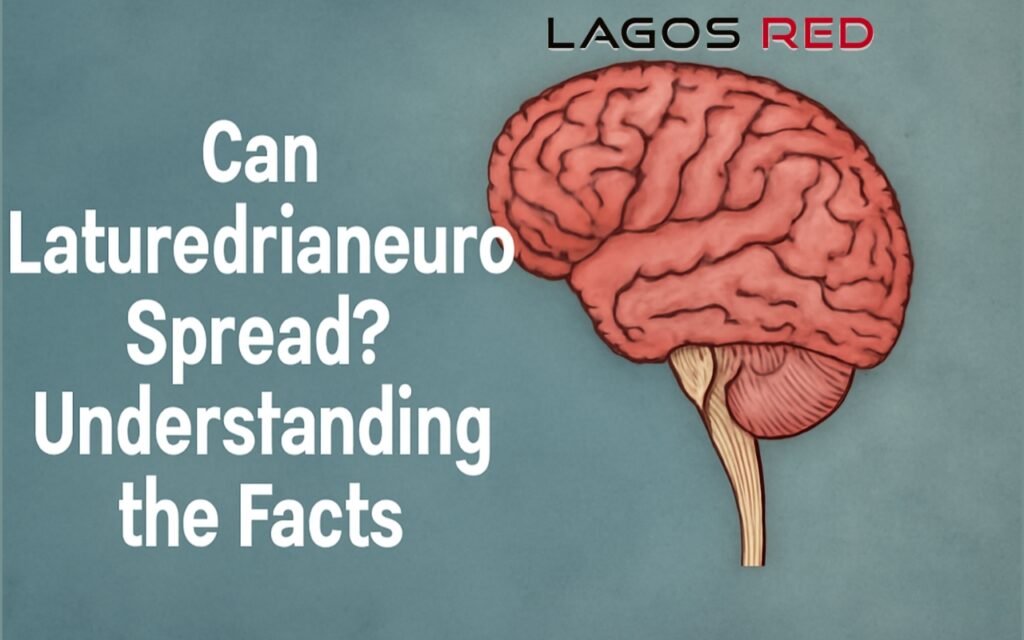In the world of neuroscience and emerging cognitive phenomena, few topics stir curiosity and caution like Laturedrianeuro. A term still unfamiliar to many, yet increasingly whispered in niche scientific circles, Laturedrianeuro represents a rare and puzzling neurological condition characterized by shared cognitive anomalies, emotional resonance, and synchronized behavioral patterns among small groups of individuals. But the question that now demands serious attention is: Can Laturedrianeuro spread?
At first glance, the idea seems outlandish — almost science fiction. A neurological pattern, potentially “spreading” without a virus, a germ, or even direct physical contact? Yet as our understanding of the human brain deepens, particularly how social, environmental, and psychological factors shape neuroplasticity, the idea becomes less far-fetched. In fact, the possibility that Laturedrianeuro might operate not through traditional contagion, but through influence and interconnectedness, opens a whole new field of inquiry.
What Is Laturedrianeuro?
Before we dive into the core question — can Laturedrianeuro spread — it’s important to understand what the condition involves. Though not officially recognized in mainstream medical literature, Laturedrianeuro has been described in several case studies and anecdotal reports as a pattern of shared sensory distortion, hyper-empathy, or even synchronized cognitive “echoes” among people in close proximity.
The onset is subtle. It may begin with mild headaches, momentary lapses in memory, or an inexplicable awareness of others’ emotional states. Over time, some individuals report almost mirror-like responses to others’ feelings, behaviors, or even dreams. While skeptics point to suggestibility or mass hysteria, others suggest that something more neurologically profound is at play.
Can Laturedrianeuro Spread in the Traditional Sense?
Let’s address the straightforward interpretation of the question: Can Laturedrianeuro spread like a virus or bacterial infection? The answer, so far, is no. There is no evidence of any microbial or genetic basis that makes it contagious in the classical sense. No pathogens have been identified. No bodily fluids or vectors are involved.
But that doesn’t mean it isn’t spreading — just not in the way we usually define it.
Psychological and Social Contagion: A Possible Path
Much like laughter, yawning, or even fear can ripple through a group, neurological states can sometimes propagate through social channels. This phenomenon is often described as emotional contagion or behavioral mirroring. So when asking can Laturedrianeuro spread, we must consider whether it behaves more like a memetic or psychosocial condition than a biological one.
In high-stress environments like hospitals, war zones, or close-knit research teams, shared neurological anomalies are not unheard of. Think of the “shared delusions” or folie à deux — psychological conditions where two or more individuals begin to share the same delusions or experiences. Could Laturedrianeuro be a similar, yet more neurologically-rooted, phenomenon?
Environmental Triggers and Neuroplasticity
Another angle to explore when asking can Laturedrianeuro spread involves environmental exposure. Certain environments, especially those saturated with high-frequency sounds, electromagnetic fields, or psychological stress, may prime the brain for unusual activity. If multiple people are exposed to the same triggers over time, their brains might adapt in parallel ways.
This doesn’t mean the condition is literally spreading — but rather, that multiple individuals may be developing the same condition under similar stimuli. That distinction is subtle, but important. It’s the difference between “catching” a cold and developing the same symptoms because of the same toxin or stressor.
The Role of Technology in Potential Spread
One of the more speculative — but increasingly relevant — theories involves digital influence. With brainwave entrainment and subliminal content becoming more sophisticated, it’s not impossible to imagine technology affecting group neurology on a subconscious level. Could constant exposure to certain visual or auditory patterns online influence neurological patterns?
In that context, the question again emerges: can Laturedrianeuro spread, not through breath or blood, but through bandwidth?
It might sound like a conspiracy theory, but consider how social media algorithms already shape thought patterns, behaviors, and emotions on a massive scale. If Laturedrianeuro is a form of ultra-sensitivity or neurological synchrony, could it be that certain digital content — intentionally or unintentionally — acts as a trigger?
Case Studies: Where the Pattern Emerges
In a documented cluster of cases from 2023, five individuals working in an underground sound research lab began experiencing identical auditory hallucinations, followed by coordinated sleep cycles and memory lapses. None of them had any prior history of neurological disorders. Over time, their brain scans showed synchronized patterns during REM sleep, leading researchers to consider the possibility of Laturedrianeuro.
Was this a one-off event, or a hint at something larger? And again — can Laturedrianeuro spread under such conditions, or was this simply environmental mimicry?

The Human Brain: Wired to Connect
At the heart of this mystery is one undeniable truth — the human brain is deeply interconnected, both biologically and socially. From mirror neurons to collective consciousness theories, we know that individuals do not think, feel, or even perceive in complete isolation.
So, when asking can Laturedrianeuro spread, maybe we should reframe the question. Perhaps it’s not about whether it can spread, but how easily we forget that the borders of the mind are not as defined as we think.
Ethical Implications
If future studies confirm that Laturedrianeuro can indeed spread via psychological or environmental channels, the implications are vast. From the design of schools and offices to digital media regulation, the way we interact and influence each other may require reevaluation.
Preventive mental health strategies might shift from treating individuals in isolation to understanding and modifying group environments. Because if Laturedrianeuro can spread, then it’s not just a neurological anomaly — it’s a social one.
Final Thoughts: Caution, Not Fear
So, can Laturedrianeuro spread? Not like a virus. Not like a disease. But perhaps in more subtle, insidious, and fascinating ways — through empathy, proximity, technology, or environment.
What this emerging condition reminds us is that the brain is not a fortress. It is a living, learning, adapting organ — shaped by those around us, by what we see, hear, feel, and even believe together. Whether or not Laturedrianeuro proves to be a recognized diagnosis in the future, it already teaches us something profound: our minds may be more connected than we ever imagined.
And in that connection lies both mystery and responsibility.

